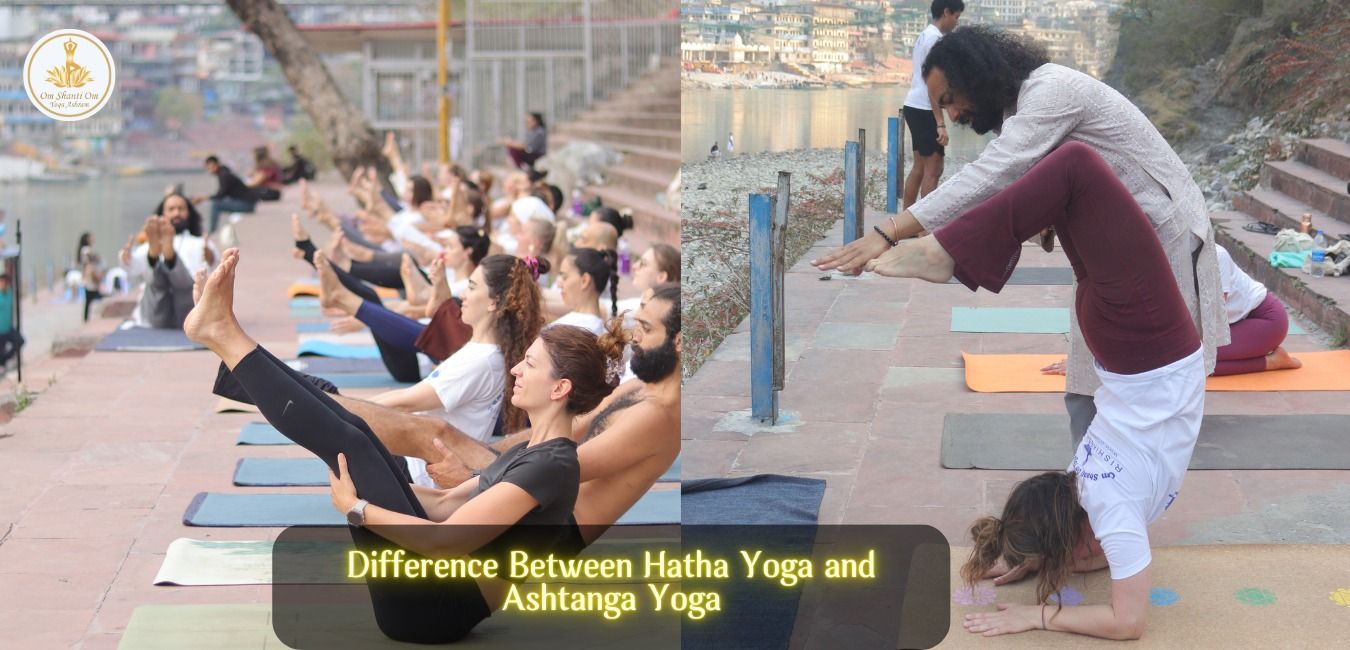
In the world of yoga, two popular styles often come up in conversation—Hatha yoga vs Ashtanga. While both practices share common roots in ancient Indian traditions and emphasize the mind-body connection, they differ significantly in their pace, structure, and intended outcomes. Whether you're a beginner trying to choose your path or an experienced yogi looking to deepen your practice, understanding the differences between Hatha yoga and Ashtanga yoga is essential.
What is Hatha Yoga?
Hatha yoga is often considered the foundation of all yoga styles. The term “Hatha” is derived from the Sanskrit words “ha” meaning sun and “tha” meaning moon, symbolizing the balance of opposing energies. Hatha yoga typically includes a combination of physical postures (asanas), breathing techniques (pranayama), and meditation.
A typical Hatha class moves at a slower pace, allowing practitioners to hold poses for longer and focus on proper alignment. This makes it an excellent choice for beginners or those seeking a more relaxed, meditative experience. It’s not about sweating or fast-paced flow—Hatha yoga is about control, mindfulness, and breath.
What is Ashtanga Yoga?
Ashtanga yoga, on the other hand, is a dynamic, physically demanding practice. Developed by Sri K. Pattabhi Jois in the 20th century, Ashtanga follows a specific sequence of poses performed in a flowing manner, synchronized with breath (vinyasa). The word "Ashtanga" translates to "eight limbs" in Sanskrit, referring to the eightfold path of yoga outlined in the Yoga Sutras of Patanjali.
There are six series in Ashtanga yoga, starting with the Primary Series (Yoga Chikitsa), which focuses on detoxification and alignment. Each subsequent series increases in complexity, requiring greater strength, flexibility, and stamina. Ashtanga is ideal for those who enjoy structure, discipline, and a full-body workout.
Hatha Yoga vs Ashtanga: Key Differences
Let’s break down the key distinctions between these two powerful yoga styles:
| Feature | Hatha Yoga | Ashtanga Yoga |
|---|---|---|
| Pace | Slow and steady | Fast-paced, rhythmic |
| Structure | Flexible and varies by teacher | Fixed sequence of postures |
| Focus | Alignment, breath, and mindfulness | Strength, stamina, and flow |
| Suitability | Great for beginners and all levels | Best for intermediate to advanced practitioners |
| Breathing | Controlled breathing with longer holds | Breath-synchronized movement (Ujjayi breath) |
| Intensity | Low to moderate | High intensity and cardiovascular |
| Environment | Calm and meditative | Energetic and disciplined |
Benefits of Hatha Yoga
Choosing Hatha yoga offers several advantages, especially for those new to yoga or seeking stress relief:
Improved Flexibility and Balance: With an emphasis on holding poses, Hatha helps stretch and strengthen muscles gently.
Stress Reduction: The slower pace and focus on breathing promote relaxation and mental clarity.
Foundational Knowledge: It’s a great way to learn the basic postures and principles of yoga.
Accessible for All: Suitable for all age groups and fitness levels, including seniors and people with limited mobility.
Benefits of Ashtanga Yoga
If you prefer a more athletic and challenging experience, Ashtanga yoga delivers unique benefits:
Physical Fitness: Builds muscle tone, endurance, and flexibility.
Mental Focus: The structured sequences and breathing techniques improve concentration and discipline.
Detoxification: Sweating through the vinyasa flows helps cleanse the body.
Consistency: The set routine allows for measurable progress and deep mastery over time.
Which One Should You Choose?
The hatha yoga vs ashtanga decision ultimately comes down to your personal goals, fitness level, and temperament.
If you're new to yoga, recovering from injury, or looking for a gentle introduction, Hatha yoga is a safe and supportive starting point.
If you enjoy a physical challenge, routine, and are looking to push your limits, Ashtanga yoga will provide the discipline and structure you crave.
It’s also worth noting that many practitioners find value in incorporating both styles into their routine. For example, practicing Hatha yoga on rest days can help you recover from the intensity of Ashtanga while keeping you connected to your practice.
Final Thoughts
When comparing Hatha yoga vs Ashtanga, it’s clear that both offer profound benefits for body, mind, and spirit. While Hatha yoga emphasizes stillness and mindfulness, Ashtanga thrives on movement and endurance. Neither is “better” than the other—they simply serve different purposes.
The most important thing is to choose a practice that aligns with your lifestyle and personal wellness goals. Whether you’re stepping onto the mat to relax, build strength, or find balance, both Hatha and Ashtanga yoga can guide you on your journey.